After this last year of isolation and fear, everyone must be in the mood for some light, upbeat reading material. Well…
I can’t say that the recent publication of a paper by Xiang Cai, Jonathan H. Jiang, Kristen A. Fahy, and Yuk L. Yung, A Statistical Estimation of the Occurrence of Extraterrestrial Intelligence in the Milky Way Galaxy, will do much to cheer you up. This non-peer-reviewed paper suggests that a number of factors could explain the Fermi Paradox (the apparent contradiction between the number of alien civilizations estimates suggest we should expect to see and the fact that we don’t see any). The largest factor? Pann: the probability that complex lifeforms are going to annihilate themselves.
To put it more simply, perhaps the Great Silence isn’t due to galactic civilizations shunning us, but rather due to the sad probability that no civilizations last long enough to communicate before they find some innovative way to remove themselves from the playing board.
The notion isn’t new. Even a community so notoriously sunny in its outlook as the science fiction community has considered the possibility that Pann might be very large indeed. To take just one early, influential author: Andre Norton’s novels often feature great civilizations, like the Baldies or the Forerunners, who have left only ruins. The implication is clear: humans may be having their day in the sun, but they too will vanish like the races before them. Other authors have found the notion equally intriguing. Consider these five novels.
City by Clifford Simak (1953)
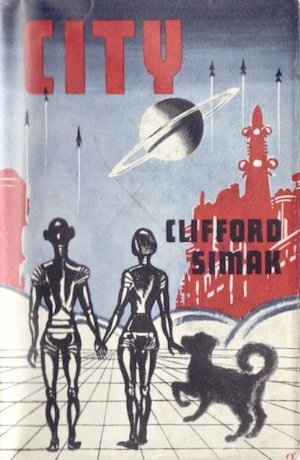
Humanity at the beginning of the 21st century had so much promise. Famine and energy shortages were vanquished; humans had acquired the basic toolkit to construct a utopia. Yet a handful of centuries later, humans were all but extinct, save for one small, irrelevant city of dreamers in suspended animation. Between those two moments lies an endless cavalcade of good intentions gone horribly awry, each one leading well-intentioned humans towards total extinction.
***
On the Beach by Nevil Shute (1957)
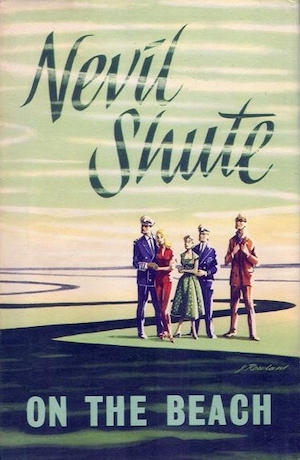
What better way to rid the world of cunning primates than to use nuclear weapons? Let’s posit inexpensive nuclear weapons, nuclear proliferation, great-power rivalries, and the use of bombs clad in cobalt (which will give any fallout an extra zing) and see what happens.
By 1963, the northern hemisphere of Earth is utterly lifeless and the only survivors are those lucky enough to be in the southern hemisphere. Alas, their reprieve is strictly temporary. The fallout is inexorably spreading south and once it infiltrates the remaining inhabited regions, that will be that for life on Earth. Hard news for life in general, but very hard news for the humans who understand exactly what is going to happen.
***
Cat’s Cradle by Kurt Vonnegut (1963)
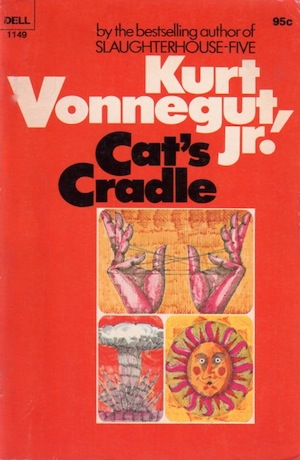
Eschewing straightforward atomic doom, Vonnegut turns to visionary (and happily, physically impossible) chemistry to account for humanity’s self-inflicted demise. The late Felix Hoenikker was one of the men who gave the world the atom bomb. Later his peripatetic genius turned to exotic forms of matter, specifically Ice Nine. Ice Nine is solid-phase water with a number of fascinating properties. Firstly, it is solid at standard pressure and room temperature. Secondly, any water that comes into contact is immediately transformed into Ice Nine. A world ruled by prudence would destroy any samples and never create any more. Vonnegut’s characters are not known for their excess of prudence, which meant it was only a matter of time before one of the Ice Nine samples finds its way into the ocean….
***
Saturn’s Children by Charles Stross (2006)
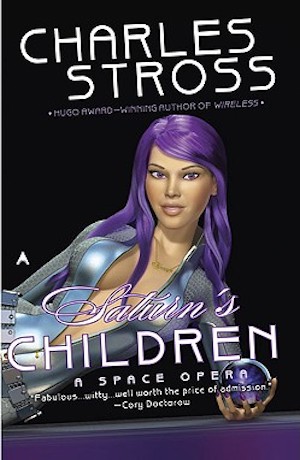
Freya’s Creators—humans to you and me—were in some ways impressively advanced. They created obedient androids and robots, often in their own image, and then managed to kill themselves off. Their creations soldiered on despite the absence of the Creators. It turns out that androids and robots can have interesting adventures too.
***
Girl’s Last Tour by Tsukumizu (2014 to 2018)
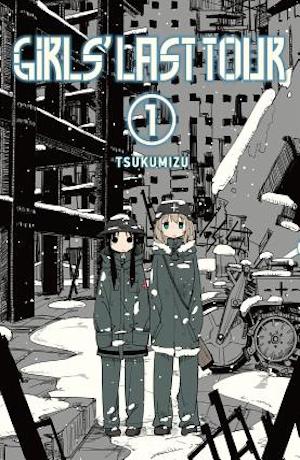
At first glance, one might think that it was war that sent young Chito and Yuuri off on an apparently futile quest for a safe haven. War may have started the catastrophic slide into human annihilation, but it didn’t finish it. The real culprit was the grand human effort to bring the entirety of the world under human control. The manga is set in a world of deserted, interlocking cities. What little life remains is confined to terrariums that are slowly breaking down. Had there still been wilderness, there might have been somewhere to which survivors could flee. Perhaps the human population could have recovered. But so far as we know, when the manga ends, Chito and Yuuri may be the only survivors. Food and fuel are running out….
***
No doubt you have your own favourite examples of self-inflicted species-wide Total Party Kills. Feel free to use the comment section to berate me for overlooking them.
In the words of Wikipedia editor TexasAndroid, prolific book reviewer and perennial Darwin Award nominee James Davis Nicoll is of “questionable notability.” His work has appeared in Publishers Weekly and Romantic Times as well as on his own websites, James Nicoll Reviews and Young People Read Old SFF(where he is assisted by editor Karen Lofstrom and web person Adrienne L. Travis). He is a four-time finalist for the Best Fan Writer Hugo Award and is surprisingly flammable.










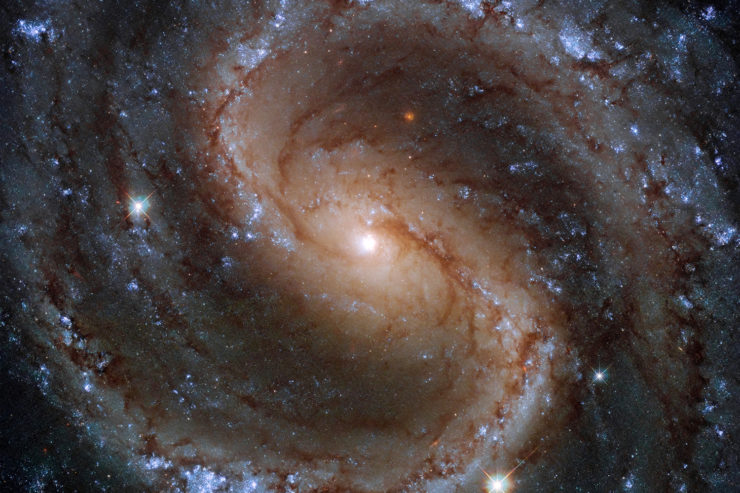
The aptly named Total Eclipse by John Brunner has xenoarcheologists from Earth exploring why a nearby alien high tech civilization inexplicably died out when suddenly all communication from Earth abruptly stops.
Last and First Men by Olaf Stapleton has humanity die out and re-evolve multiple times. The most mind blowing thing for teenage me was when the omniscient narrator set the point at which the First Men were irrevocably doomed to extinction at World War 1.
Isn’t Jack McDevitt’s Priscilla Hutchins series set in a universe where Pann is very high?
@3: The problem with the Hutchinsverse is that Thing at the center of the galaxy that deployed a distress signal that, by its nature, tends to eradicate civilizations that use right angles has its thumb on the scales. When you correct for that, it seems the usual end state for intelligent life is to invent Facebook and then disappear up its own ass.
Laumer’s “Bolo” stories have humanity and another species finding a way to exterminate each other simultaneously. IIRC, Piper had a book with that ending, too.
A Canticle for Leibowitz. It’s been a while, but I believe humanity does itself in twice.
The movie A.I. chronicles the extinction of humankind as unchecked global warming and sea level rise are followed by an equally drastic climate correction to a snowball Earth. This all unfolds from the tragically limited viewpoint of a robot who was designed to be a naive and dependent child-surrogate for bereaved (and wealthy) parents living during the last flowering of high-tech human civilization. By the end, he’s still eternally six years old, and also one of the only two robots still functioning who remember humankind. A machine civilization lives comfortably in the frozen wasteland.
Level 7! Creepiest end-of-the-world novel I ever read.
https://en.wikipedia.org/wiki/Level_7_(novel)
Humans survive the first Flame Deluge in Canticle but probably not the second. I argued in a uni English course that the fact humans had colonized three exoplanets before killing the Earth meant it was a net gain but the other students seemed unconvinced.
Asimov’s “The Gentle Vultures” has a nonhuman species watching the Earth and waiting for human beings of off themselves, if I’m remembering right.
I guess there are variants of this story elsewhere.
Ovid’s Metamorphoses, book 1. Human beings piss off the chief god so much that he wipes them out entirely, except for two old people who can’t have children. There’s another human race in the rest of the book, but it has a different origin story.
It has occurred to me that Ice-Nine in “Cat’s Cradle” may have been inspired by the “polywater” controversy of the 1960’s.
Donald Moffitt’s has humanity restored from a broadcast out into the galaxy and returning to Earth in The Genesis Quest and Second Genesis.
There’s also Ian Douglas’ Altered Starscape and Darkness Falling, where a group of humans is hurled into the far future and try to figure out just what’s going on.
“For A Breath I Tarry” by Roger Zelazny is one of my favorites, a retelling of Job and Genesis set in a distant future inhabited by robots who worship the memory of the long-extinct Man. (It’s a novella, not a novel.)
Technically, it’s debatable whether humanity is really extinct in City. Most of them went to Jupiter where they were converted into Jovian Lopers, because that was a much better life, both morally and physically. The Earth was left in the care of the evolved dogs, a truly moral species.
In A Canticle for Leibowitz, though, humanity really does wipe itself out in the end. (Or possibly is replaced by a holy and immaculate successor.) It is one of bleakest and most beautiful books I have ever read.
Traveller doesn’t seem to be particularly interested in this one, with the noteworthy exception of the Ancients (Ancients, of course, are always extinct, Or Are They?) and the essentially-flavor-text planet Sabmiqys.
The property next door, Traveller 2300, plays with it some; the Eber bombed themselves back to the Stone Age, and we tried really hard too (the game, after all, is a sequel to Twilight: 2000). The Kafer had themselves a nice little nuclear war in the 1800s, but given their oddball neuroendocrinology it sort of worked out for them. I think there’s more self-terminated or nearly so aliens in the splatbooks.
My impression that it’s Literal Cover Day may be mainly set by “On The Beach” being represented by some people standing on a beach. And “City”, some people looking at a city.
Quite recently I was looking at the cover of “The Space Merchants” and wondering why the cover was being praised, since it just showed an elevated road that some yellow taxis shaped like the Pink Panther car, if anyone gets that reference, were driving left or right on, with a smog-smothered city behind, and what that said about the story escaped me.
A really ambitious species can not only wipe itself out but also create problems for the rest of the galaxy. Whatever species originally created Fred Saberhagen’s Berserkers is presumably long gone, but their superweapons go right on killing everything they can find.
I think Bayern (the long range mission) finds at least one extinct civilization. There seem to be two broad tendencies in 2300: self-extermination or if they last long enough, conquest by a more technologically advanced civilization. Humans are not the most advanced species seen in the game.
Miyazaki’s Nausicaa involves humanity dooming itself three or four times over: First when it murdered itself in a war, secondly with pollution, thirdly when the things dealing with pollution protects itself from humans trying to destroy it, and fourthly when it turns out that humanity now needs trace amounts of pollution and can’t survive once the world’s been cleaned up.
Not a prose book, but I say graphic novels count. I understand there’s also a movie.
The humans in Stross’s Saturn’s Children didn’t exactly off themselves. They just got uninterested in breeding.
@21: It’s an excellent movie. It removes the plot point about humans having adapted to pollution, and allows a thread of hope. The protagonist discovers that the Toxic Jungle is only toxic because it’s sequestering, therefore concentrating, the persistent environmental contaminants of the previous age: if you plant a Toxic Jungle spore in a greenhouse on the clean side, the resulting organism is harmless. The floor of the Toxic Jungle is really an understorey dense enough to walk on. Below it is a landscape that has essentially been stripped down to regolith and the inorganic cores of giant Toxic Jungle trees. But the water is pure, light filters in, and plants that don’t need much more than water and sand can grow there. Assuming that humans can endure on the surface while the Toxic Jungle does its work, they will be able to move into the cleansed landscape afterward. It is implied that the people of the Valley of the Wind are likeliest to survive that long.
JamesEnge@12: If you’re going that route, the apotheosis of the subgenre is James Tiptree Jr’s ‘The Screwfly Solution’, which is difficult to top in its sheer horrifying depressingness.
In Ruthanna Emry’s Innsmouth Legacy series, we are told that humans/People of the Air replaced The Mad Ones Under the Earth, and will be replaced in turn by the The Deep Ones. Only the Yith will survive.
“Murphy’s Hall” by Poul Anderson.
“Will You Walk a Little Faster?” is William Tenn’s view on the matter – humans are so short-sighted that even with a warning that use of a particular device will inevitably lead to destruction, at least one human will find it worth his while to take the short-term gain of selling the secret to that device to the government.
Alfred Bester’s “Adam and No Eve”.
@13: not likely; the book came out in 1963, some years before polywater hit the mundane press.
Damon Knight had a few riffs on the chaos that would be caused by a duplicating machine; he saw a retreat to ~feudalism, which I would suspect is optimistic if the machines were possible.
This is basically the subject matter of John McLoughlin’s novel Toolmaker Koan, namely that intelligent species always develop the capacity to self-destruct. The story takes us through a few of them, including Humanity’s own. I recall enjoying this book, though its politics are dated, and it’s not necessarily upbeat.
Russel H @@@@@ 13 & chip137 @@@@@ 29
Here’s Vonnegut’s own account, which is boring enough to be true.
Vonnegut, Kurt. “Address to the American Physical Society” (1969) in Wampeters, Foma & Granfalloons
Have to second @8 on Level 7!
Read it must be nearly 40 years ago and it STILL haunts me.
One of most happiest moments was seeing the Berlin wall coming down and then realising that the future of Level 7 was just a little bit further away, it effected me THAT much.
I know that Beneath the Planet of the Apes by Michael Avallone was a novelization of the movie. But, it has one helluva ending: the total destruction of life on Earth by cobalt bomb.
Well, this may be a bit of a stretch but H. Ellison’s “I Have no Mouth but I Must Scream”, read when I was but a boy, chilled me to the marrow in my bones. I mean I could handle a psychotic A.I. torturing the last handful of human beings but when the lone woman of the group favored an impossibly endowed moron over the other members of the cohort, I knew my future as an erudite Lothario was finished before it began. Oh, the humanity! Then, of course, there were all of those Outer Limits episodes that featured devastated future Earths. The one in particular that featured Martin Landau as the time traveler who attempted to avert the future devastation by assassinating the mother of the individual responsible for it. And who could forget Robert Culp as the eternal android tasked with the preservation of Earth’s entire population in the “Demon with the Glass Hand”. Or Burgess Meredith in the Twilight Zones “Time Enough at Last”. Last but not least being GOD’s judgment of humanity for simply being the assholes that we are and being swept away in a deluge. Amazing that we’ve lasted this long.
David Brin wrote a paper on the Great Silence back in the 80s. It got passed around by a lot my college friends: The ‘Great Silence’: The Controversy Concerning Extraterrestrial Intelligent Life . He used some examples from science fiction as scenarios for some reasons for the apparent absence of intelligent life.
The dinosaurs were around for 90 million years, humans for 2 million. We’ve had radio for less than 150 years. You can stick with light speed limitations or postulate some sort of FTL travel, but either way, the odds of another technological civilization being contemporary with ours don’t seem very high.
The short story “On Sequoia Time” by Daniel Keys Moran has humans finally finish the job on themselves when someone releases nanomachine technology and the planet ends in the gray goo scenario.
@35 David Brin also wrote a novel, Existence, which addressed the question.Various alien artifacts and relics found reveal a disturbing pattern to the progress of intelligent life in the universe, a pattern which Humanity seems to be following.
The best explanation for the alleged Great Silence is from XKCD
https://xkcd.com/638/
We’re looking for the wrong things, and we just do not know the right things to look for yet. We should still keep looking nonetheless.
Popping in to say that, after reading this list, I bought and read the e-book of “On the Beach.” I can’t exactly say thanks for the recommendation, but reading it was definitely An Experience. Let’s just say it’s not a book I’ll be re-reading any time soon.
I want to avoid spoilers (although between the review above and the fact that the ending is telegraphed very early in the novel, it’s not exactly hard to guess how things work out). However, no matter how bleak and depressing you imagine this book might be, you’re wrong. It’s infinitely bleaker and more depressing than that.
@40/jaimew – I’m familiar with the 1959 movie.
The notion that, in response to this challenge, the human race would simply roll over and die struck me as so implausible as to be ridiculous.
But the book and the movie were intended as propaganda, not as serious extrapolation. The farce, Dr. Strangelove (1964), is actually more realistic.
I figure, at some point every high technical civilization develops the alien equivalent of a virology institute.
From that point on, that civilization is just one dropped test tube away from extinction.
Compared to what biology can do, nuclear weapons are toys for children.
@42 for your dropped test tube look up the intro scene to Not With A Bang, a 90s British comedy series, although iirc not really worth watching much more than that